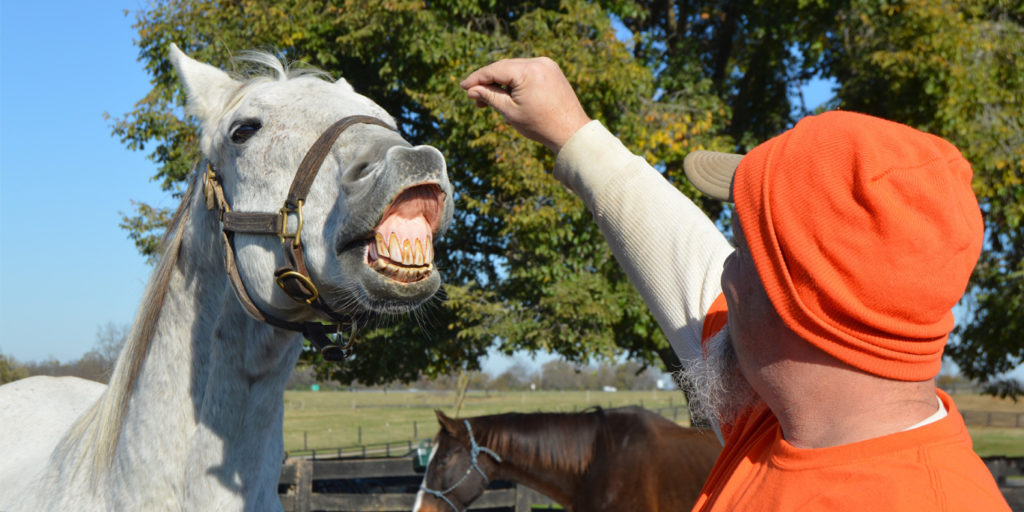Riding A Dream Academy
Country: Great Britain
Education
Country: Australia
For young people interested in horses but without any previous experience, it can be difficult to know how to get involved in the thoroughbred industry. On the flipside, in 2018, key industry stakeholders in Australia took a fresh approach to supporting young horse lovers looking for a rewarding career. The result was the launch of the not-for-profit Thoroughbred Industry Careers (TIC), backed by some of Australia’s major stables and stud farms.
Fast forward two years and TIC is now well known within the equestrian community for its national work supporting championship inter-school events. It has trained and mentored 70 young Australians through innovative educational programmes – the Explorer Cadetship and the Accelerator Program – which provide opportunities for young people with a passion for horses to develop to the best of their ability.
The Explorer Program is a 12-month gap year initiative to educate and train students in the breeding and racing industry. It establishes a strong foundation of knowledge through its 12-week boot camp training, which includes industry tutorials and practical hands-on experience, followed by two paid work placements at a leading racing stable and stud farm. These enable cadets (programme participants) to see the bigger picture and decide which career path is the best fit for them.
The involvement of industry experts in TIC’s educational programmes gives young people access to the best of the best.
The beauty of the Explorer Program is that whether you have a strong horse background or not, every student is given the opportunity to succeed by taking away all of those barriers which traditionally would stop some people from following their passion. It also provides an instant industry network which is vital for young people just starting out.
Lindy Maurice, CEO, Thoroughbred Industry Careers
The Accelerator Program is a 12-week intensive trackwork riding course. Students learn from the professionals – mentored by some of Australia’s top jockeys – to develop the skills they need to succeed.
TIC provides tuition scholarships for these national, residential programmes.
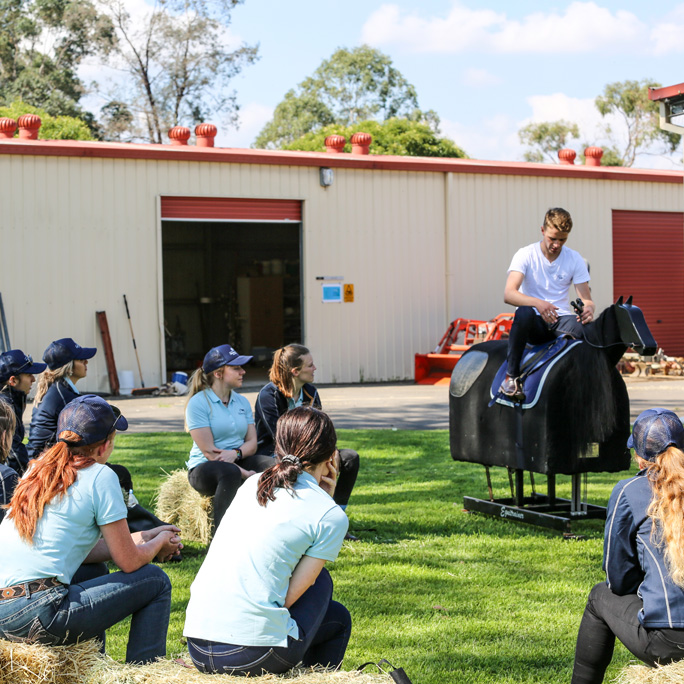
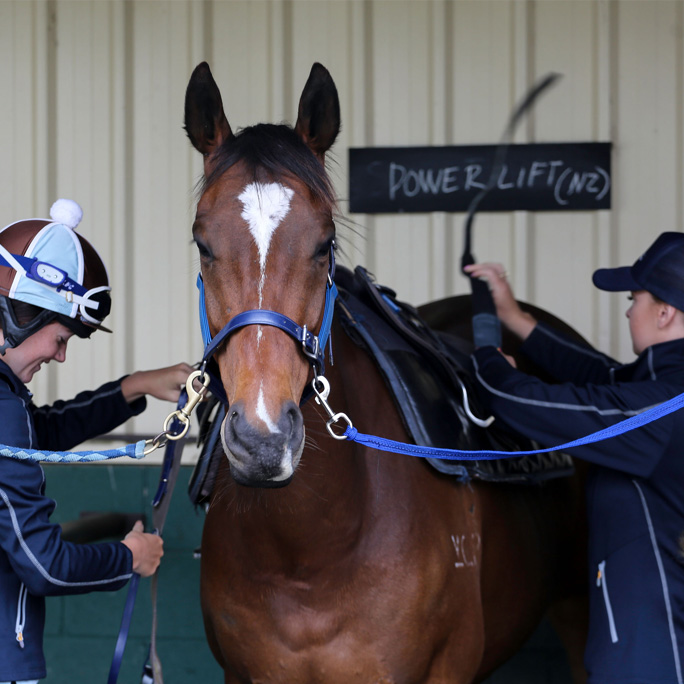
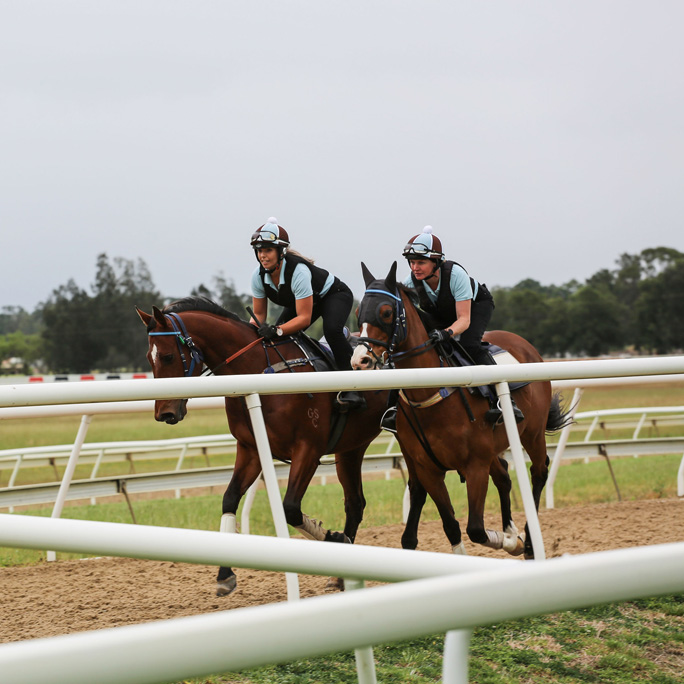
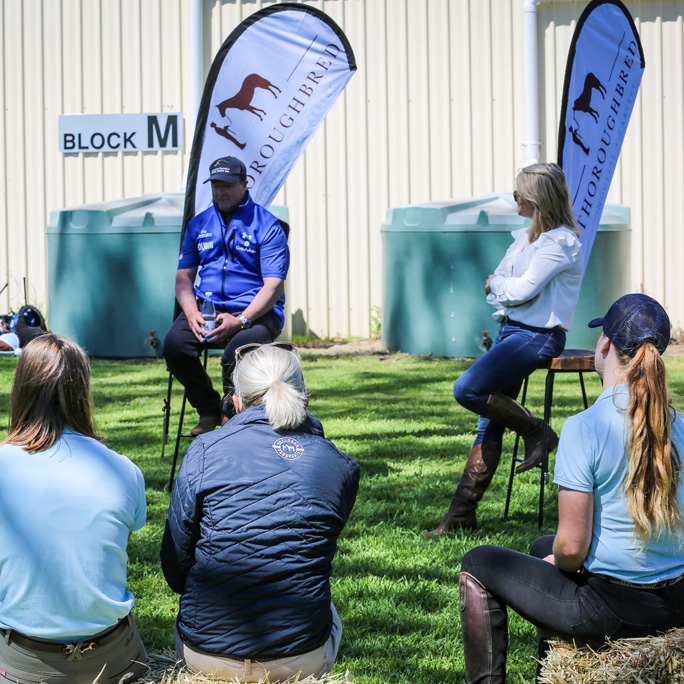
The multitude of testimonials from students who have benefited from the programme speaks volumes about the success of Thoroughbred Industry Careers in such a short period of time.
The programme hasn’t just helped me get to where I am today, it’s helped me become the person I am today. I am doing things that I never would have been able to do without the help of this amazing programme.
Beki Barlow, programme graduate
This programme has honestly changed my life and has given not only me, but a lot of other students, the greatest opportunity to have a real go at turning something they have a passion for into a career.
Jack Cripps, programme graduate
Whatever your goal is, track rider or future jockey, the Accelerator Program gives young equestrians from all backgrounds the opportunity to take that first big step and chase their dreams on the track. Anything is possible with great mentors, plus inspired action.
Eliza Hart, programme graduate
By creating innovative programmes that open doors for newcomers, the thoroughbred industry is giving young people the opportunity to learn about horses and all the associated activities and career opportunities.
Visit the TIC website to read more about its programmes, and see the Australia page on TfRI for more information about the country’s educational, community engagement and career initiatives.
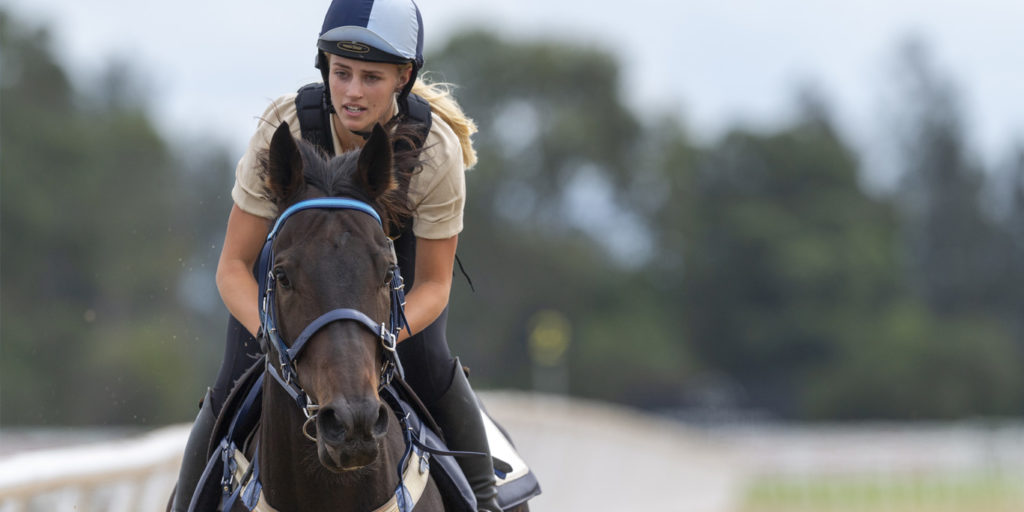
Workforce & Careers
Country: France
Imagine visiting a racecourse for the first time. Instead of sitting in the grandstands, you get to walk on the track where the horses run, stroll through the jockeys’ room where they prepare for rides and stand next to a trainer before a race. This behind-the-scenes immersion, combined with a professional network and educational resources, can even influence career decisions.
Aux Courses Les Jeunes (ACLJ) – which translates as “Young People to the Races” – is led by young professionals from France’s thoroughbred industry. Harnessing the power of their own connections and passion for horseracing, this initiative helps students and young adults to discover a world of opportunities they might never have known existed.
The idea started small – young industry professionals wanting to introduce friends to a sport they loved by bringing them to a racecourse. For the big Prix de Diane race day in 2016, co-founder William Rimaud created an event on social media with a meeting place and a link to the France Galop ticket office. Fifty people showed up, most of whom had never been to a racecourse.
Now ACLJ has grown from a grassroots initiative to a recognised non-profit organisation. It is operated by a board of six young professionals who administer everything from event coordination and promotion to professional relations in the flat racing and trotting industries.
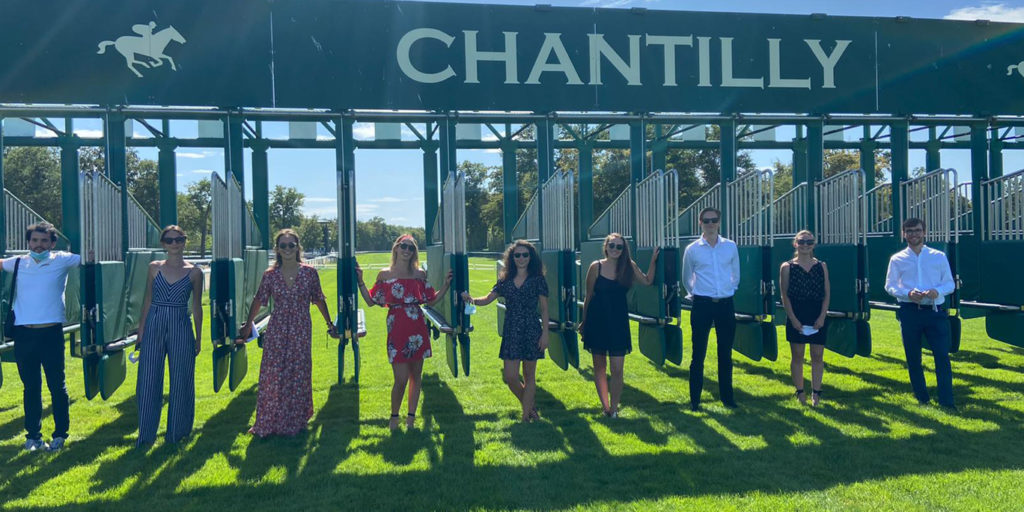
ACLJ takes people to racecourses and beyond, organising tours of training centres, thoroughbred farms, auction houses and retraining facilities. Along the way, participants get to meet prominent stallions, interact with racing professionals and become part of a network of other young people who share similar interests.
From immersive events to online learning, the ACLJ website is a tool for highlighting careers and sharing personal stories of young people who work in horseracing. ACLJ connects to its networks and reaches new audiences through an active social media presence.




While ACLJ can spark interest in employment, its purpose is broader than developing France’s workforce. Positive outcomes of these interactions are vast, from learning about the high level of care provided to horses in racing and breeding and developing a positive perception of the sport, and connecting to hands-on training and ownership of horses.
The first step to achieving these outcomes is by demonstrating that anyone can have a role in the horseracing industry.
I participated in an ACLJ event this summer at France Galop’s Chantilly training facility. This event allowed me to both meet top-ranked thoroughbred trainers such as Francis-Henri Graffard, Nicolas Clement and Mikel Delzangles, as well as learning their job, responsibilities and motivations. Being able to explore another side of racing fostered my curiosity to learn more about the industry but also to consider a professional career in it. In my opinion, ACLJ events enable the broadening of your racing knowledge by putting you in touch with professionals and positively influencing your vision of racing.
Student Maxime Pasquier, who is now investigating thoroughbred industry career training opportunities
By harnessing the enthusiasm of engaged young people and making others aware of opportunities, the thoroughbred industry is opening doors for newcomers to become involved. This accessibility builds a pipeline of talented employees and advocates.
Discover more about how people got involved in the racing industry or their experience with it through the following interviews (in French):
Visit the France page on TfRI for more information about the country’s educational, community engagement and career initiatives.
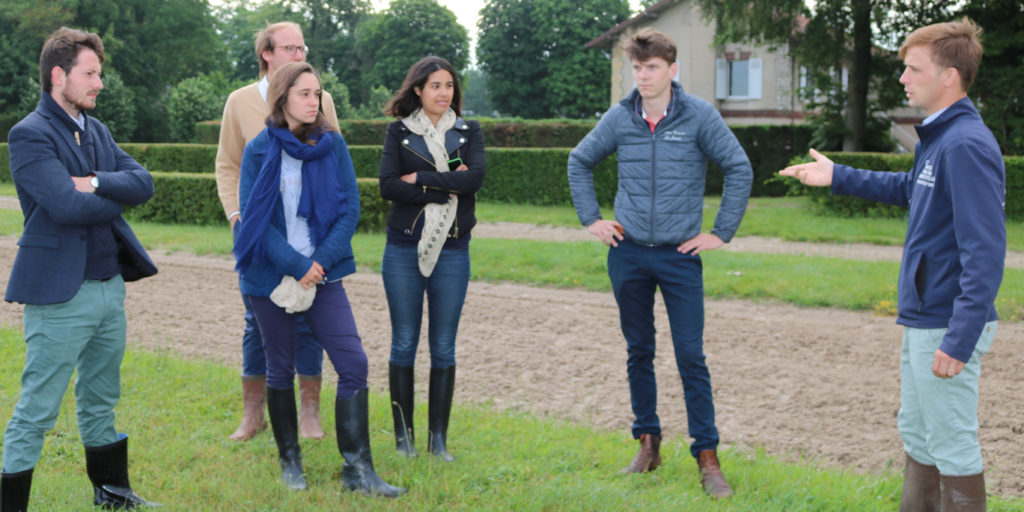
Community Engagement
Country: Japan
Owning and riding horses can be perceived as expensive and inaccessible. So when racecourse visitors can personally connect with the horse, these interactions have the potential to develop understanding and appreciation – and leave a lasting impression.
Thousands of people gather at Japan Racing Association (JRA) racecourses – not just for big race days, but on other days, too. Children and families line up for pony rides and to take photos with mascot horses. Dressage, vaulting and other riding discipline demonstrations entertain the crowds and community members can register for free riding lessons – all in addition to the excitement of racing.
Japan has two regulatory bodies that oversee horseracing: the JRA is a public enterprise established by the national government and the National Association of Racing (NAR) is operated by local governments. The JRA maintains 10 racecourses around the country. All facilities welcome families with safe playrooms for children to run around in, outdoor playgrounds to climb on and baby-changing and nursing rooms.
A day of horseracing in any country follows a scheduled programme, with horses entering the saddling area, walking onto the track and running their race. The next group of horses repeats the same process.
While this is captivating to fans who love the strategy of studying past racing performances and picking potential winners, the time between races can lose the attention of children and other horseracing newcomers. Creating educational and engaging experiences teaches visitors about the importance of the race day process, and piques interest in the horses themselves.
Racehorses are professional athletes in the peak of fitness on race day: beautiful to watch from a distance, but not accessible to touch. The JRA has equine learning and photo stations where visitors can touch real horses and handle equipment that is used to care for them.
Whether children and community members feel inspired by the jockeys or simply want to be more involved, each JRA racecourse has a riding academy that offers free riding lessons by appointment.
To make thoroughbred racing more accessible and welcoming to women, the JRA created UMAJO, a unique programme devoted to promoting the sport to women. Through UMAJO, which translates as ‘horse women’, they can socialise in women-only cafés at each racecourse and join classes to learn the intricacies of racing and betting.




Jockey Babies is a children’s race series that started in 2009. Youngsters aged 10 to 13 can participate, with trials held at eight locations through local pony clubs. The eight qualifiers are hosted at Tokyo Racecourse for the final, competing on ponies provided by the JRA.
Jockey Babies has had significant success in kick-starting the careers of several professional jockeys and riders. Kazushi Kimura, who placed fourth in the 2011 edition, went on to ride as a jockey in Canada and the United States, and earned prestigious year-end championship titles in each country – the 2018 Sovereign Award for Outstanding Apprentice in Canada, and the 2019 Eclipse Award in the United States.
I had always wanted to be a jockey since I was little, but it was more like a dream until I rode in the Jockey Babies final on the Tokyo Racecourse turf. My vague dream became a firm commitment to race as a professional, and I’ve worked my way up to this point. There are many hardships in life, but horseracing has rewards that far outweigh them.
Kazushi Kimura, professional jockey and former Jockey Babies participant
By creating positive experiences that bring people close to the horse, the thoroughbred industry is ensuring that racegoers, volunteers, neighbours and stakeholders have positive experiences and can become potential advocates.
Visit the Japan page on TfRI for more information about the country’s educational, community engagement and career initiatives.
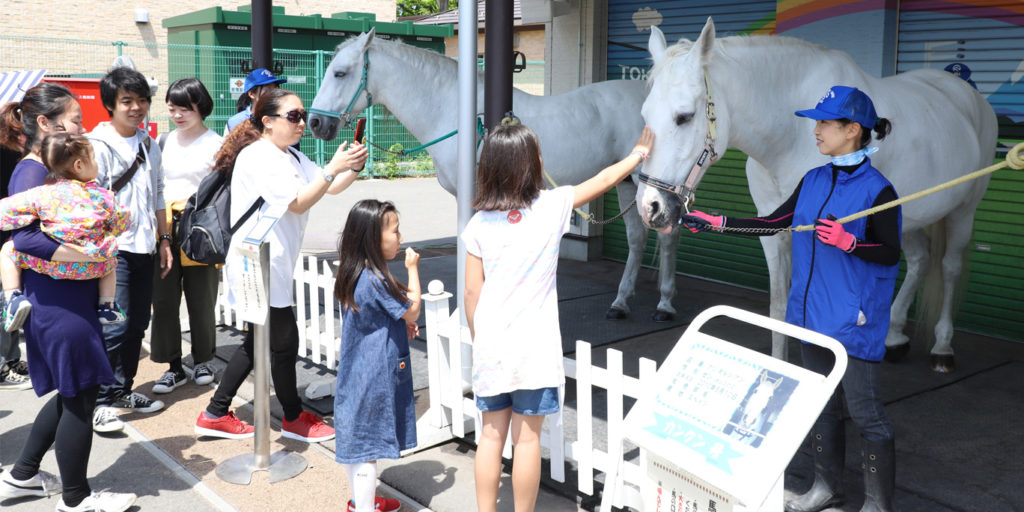
Education
Country: Ireland
Moyross is a sprawling district in Limerick, Ireland, known for its extreme poverty, high unemployment, crime and anti-social behaviour. These social barriers are emphasised by physical barriers, with a wall dividing the housing estate from a nearby third-level college. For many young people in Moyross, it can be a strain to keep their heads held high and vision fixed on educational and career goals.
Horses can encourage a sense of responsibility to something other than unstable personal relationships and crime. Additionally, racing is entrenched in the culture of Ireland, providing multiple job opportunities. The Racing Academy & Centre of Education (RACE) has been supporting educational and career attainment through outreach programmes to urban equine project initiatives, including Moyross.
RACE is the national training academy for the Irish horseracing industry, offering courses for jockeys, stable staff, racehorse trainers, breeders and others involved in the thoroughbred sector.
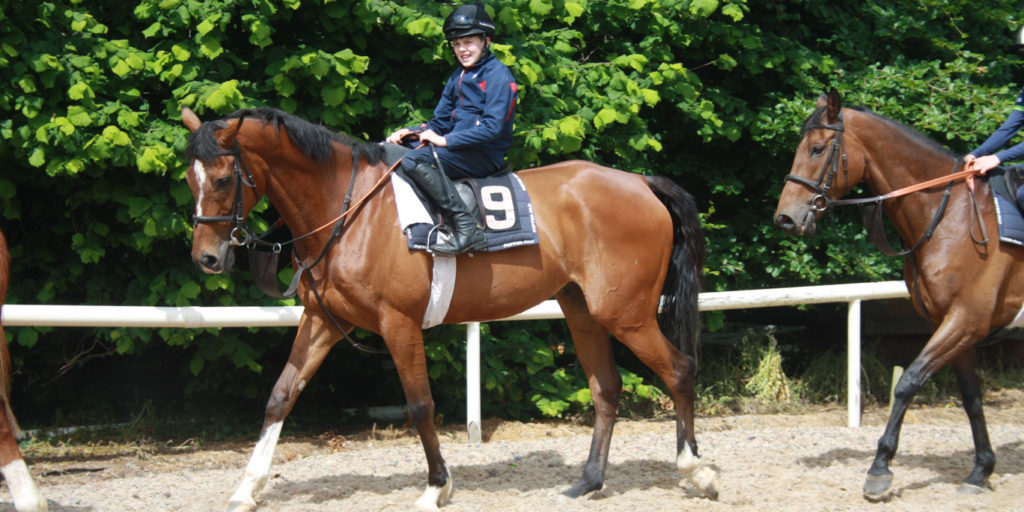
In the beginning, it was equine welfare concerns in the Moyross area that led to the development of education programmes for young people. The positive outcomes of this education and benefit to the wider community were evident.
Since 2007, the Moyross Development Company has supported a multi-agency equine initiative, which has expanded in recent years to include local primary schools, youth groups and a Pony Club branch. The thoroughbred racing industry, through RACE, has maintained a collaborative relationship with the Moyross Development Company and Garda Youth Diversion Project since the programme’s inception.




Visits to RACE through the Moyross Youth Academy provide young people with an entry point to the horse industry. They have a chance to learn about careers and training programmes offered, and their participation with the RACE Junior Academy programmes facilitates their integration with other groups.
Several young people who started with these visits have successfully completed the RACE trainee jockey course, progressed to working for racehorse trainers and remain involved as leaders and role models for other young people in Moyross.
I remember visiting RACE at a young age. I loved the set-up there, the thoroughbreds, the yard, the simulator and the trainee jockeys wearing the best gear… I knew from those early visits that RACE was for me. This was always my goal and having that goal and the support from my family and the staff of [Moyross Youth Academy] is what kept me on the straight and narrow, which I now understand wasn’t always easy for them.
RACE is where I felt the plan to become a jockey got very real for me. They set me up on placement with [trainer] Johnny Murtagh and that’s where I work now. It’s the best yard in the country at the moment. We’re turning out winner after winner so it’s a very exciting place to be. The work is hard but very rewarding, there’s a real team spirit there. I wouldn’t want to be anywhere else, I’m learning my trade from one of the best.
Wesley Joyce, Moyross Youth Academy and RACE outreach programme beneficiary
A goal of the collaboration is to start participants at an early age and provide ongoing support through the network of groups that work with Moyross Youth Academy and RACE. The success of this scheme requires a team effort, with relationships facilitated by RACE’s recruitment officer and a wider group of instructors.
In 2018, following consultation with various stakeholders, RACE outlined a proposal for an Equine Pathway scheme with urban horse projects. This would establish a structured progression system for young participants.
With support and relevant expertise in place, the Equine Pathway scheme aims to harness youngsters’ natural interest and enthusiasm for horses. This could not only help instil a set of life skills and positive behaviours, but also prepare them for a job in the horse industry and provide a strong foundation for their future. The entire pathway would have a positive cyclical effect, generating role models and mentors for those who follow.
By using its assets to inspire young people and improve educational attainment, the thoroughbred industry is providing hope for the future and opportunities for success.
Visit the Ireland page on TfRI for more information about the country’s educational, community engagement and career initiatives.
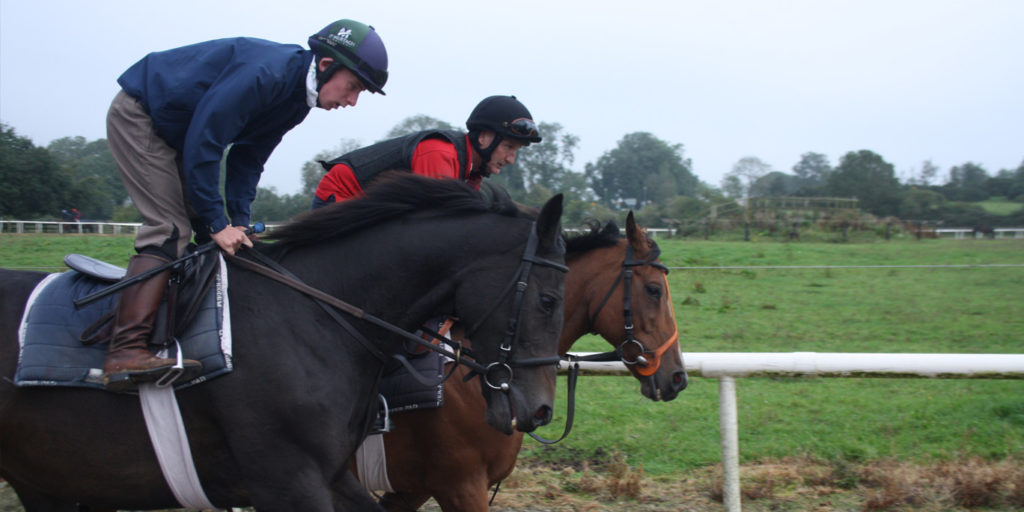
Workforce & Careers
Country: Ireland
Employees in the thoroughbred industry rise before the break of dawn. There are early mornings in the stables, dishing out feed or tacking up for training, and late nights returning from the races or visiting a vet. Days operate to the rhythm of galloping hooves, cleaning stalls, grooming coats and rattling feed buckets.
It is a love for the horse that attracts many people to work at breeding farms, training centres, racecourses, or veterinary practices. But providing the best care for the horses also requires a high standard of respect and care for the employees who work with them.
With a goal to implement best practices, articulate the value of industry employees, and develop a sustainable workforce, Horse Racing Ireland (HRI) created the Employment Guide for Horse Breeding & Racing Sectors.
The Employment Guide for Horse Breeding & Racing Sectors is part of HRI’s Strategic Plan, which outlines an objective for “Driving Excellence Through People”. This acknowledges that the future success of the horseracing and breeding industry depends on a continued population of dedicated and qualified staff, and a mission to increase direct and indirect employment from 28,900 (in 2017) to 35,000 by 2024.
Industry trade organisations, including the Irish Racehorse Trainers Association, the Irish Stable Staff Association, and the Irish Thoroughbred Breeders’ Association, worked collaboratively on the guide over 12 months, assisted by the Workplace Relations Commission and Horse Racing Ireland.




The guide is a comprehensive resource of employer and employee “essentials”. It details recruitment and hiring processes, negotiating contracts and fair pay, fair work breaks and holidays, general health and safety and ending employment.
The horseracing and breeding industry supports almost 29,000 jobs in rural Ireland. These employees have a worldwide reputation for excellence, so I welcome this publication which allows tradition to be harnessed in a modern working environment where employees expect such standards to be in place.
Charlie McConalogue, TD, Ireland’s Minister for Agriculture, Food and the Marine
From country to country, thoroughbred industry breeding and racing practices might differ slightly, but one thing remains the same: employees must feel safe and supported to provide the best work and care for the horses.
Parents want to know their child will be entering a safe and sustainable industry. Educators want to know their students will have opportunities. Jobseekers desire respect and progression.
By setting standards which show employees that they are valued and will be cared for, the thoroughbred industry is enhancing both the reality and the perception that it is a great place to work and develop a career.
Visit the Ireland page on TfRI for more information about the country’s educational, community engagement and career initiatives.
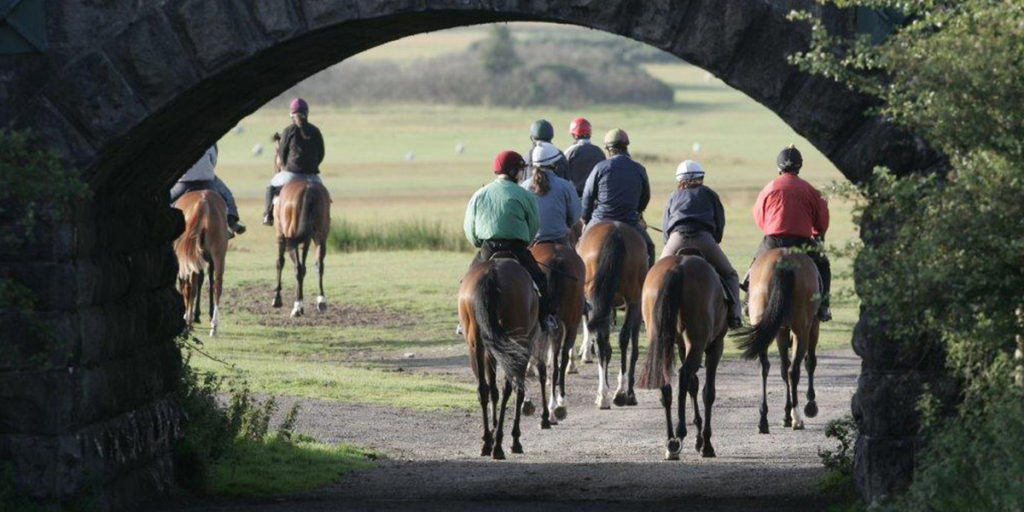
Education
Country: England
Opportunities in the thoroughbred industry have the potential to change lives, with an expansive offering of careers involving science, maths, business, technology, travel and tourism, communications, and more.
The Newmarket Academy Godolphin Beacon Project (NAGBP) shines a light on this potential, using the industry’s assets and networks to ensure that young people have an understanding of horseracing, and receive guidance on career pathways within the industry and beyond.
To bridge the gap between careers awareness and applied skills, NAGBP was launched in 2016 with two key goals: to expand the aspirations and ambitions of all students involved by presenting the diverse career pathways that exist for them.
Newmarket is the home of horseracing, and the Suffolk town has plenty of training yards and gallops just steps away from residents’ homes. The Beacon Project was conceived as a comprehensive educational programme for students to bridge the gap between the town’s world-famous racing industry and the local community.
This win-win combination empowers students with a feeling of belonging to a vibrant and successful industry, embedded within their community, which has an immense breadth of possibilities for their future.
NAGBP is part of a shared vision between Newmarket’s biggest employer, Godolphin – one of the largest thoroughbred racing and breeding operations in the world, founded by Sheikh Mohammed bin Rashid Al Maktoum – and Newmarket Academy, the town’s only secondary school.
NAGBP is delivered by the charity Racing to School, which has been working across racing to offer free, curriculum-based education activities for nearly 20 years. Other partners of the program include The Jockey Club, National Horseracing Museum, British Racing School, Tattersalls and veterinary facilities, among others.




Serving over 600 pupils, aged 11-16, NAGBP hosts approximately 30 events each academic year covering maths, business studies, hospitality, careers advice, food technology, art, and travel and tourism. The immersive learning experience enables students to gain practical skills and knowledge applicable to each career pathway.
The project has been the single most significant element of this school’s transformation. It has given our students an unparalleled set of opportunities to enrich their lives, expose them to the multiple career opportunities that exist in our town and our industry, provide them with the inspiration and ambition to excel, and the skills and knowledge to make the very best of these life chances. The project is organic, bespoke and flexible, meeting the needs of all our students.
Nick Froy, Headteacher, Newmarket Academy
By providing educational and career resources, the thoroughbred industry is inspiring students and equipping educators and educational institutions to become advocates of racing and breeding.
Visit the Great Britain page on TfRI for more information about the country’s educational, community engagement and career initiatives.
Learn more about the Newmarket Academy Godolphin Beacon Project through the following stories:
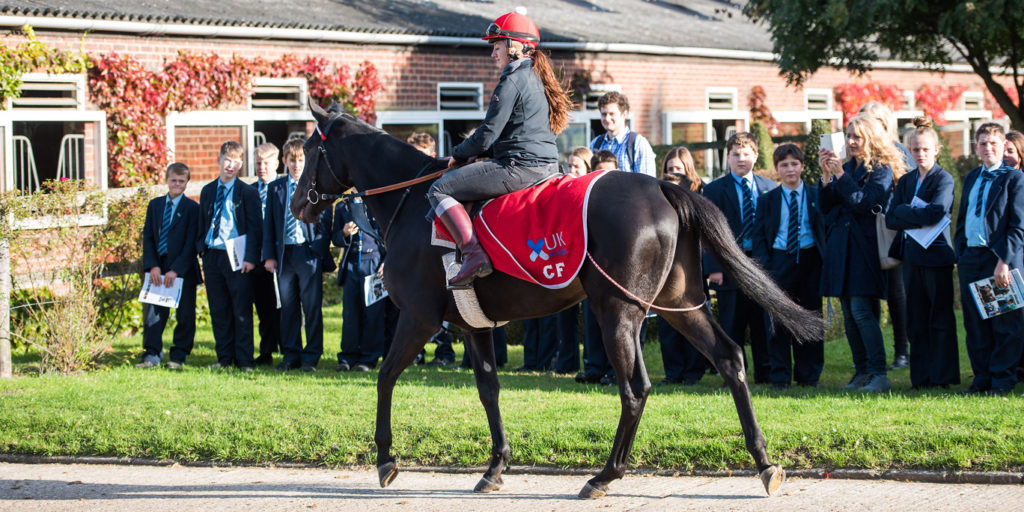
Community Engagement
Country: Scotland
Tackling social or economic challenges can feel daunting when faced with statistics like 90,000, which is the number of people in Scotland living with dementia.
Horseracing is a fast-paced, social sport where people come together to appreciate the athleticism of the thoroughbred. This environment is a perfect platform for developing an inclusive, safe space and aligns with a key focus of Scotland’s National Dementia Strategy: to reduce social isolation through physical activity and increasing inclusive opportunities within the community.
To combat dementia, every racecourse in Scotland and 1,600 employees of betting chain William Hill partnered to support Alzheimer Scotland, becoming trained as ‘Dementia Friends’ and raising awareness and funds to support the charity.
The partnership between Scottish Racing and William Hill in support of Alzheimer Scotland started in 2019, supporting the aim that people can live well in their dementia-friendly local and horseracing communities.
Dementia affects individuals throughout the entire community without prejudice. The sport of horseracing has a wonderful ability to bring people together, which is a great asset when tackling the widespread impacts of dementia. We very much hope that through this partnership we will be able to promote the excellent work of Alzheimer Scotland to the broader community.
Delly Innes, Manager of Scottish Racing
In addition to educating and raising awareness about dementia to reduce stigmas about the disease, objectives for the partnership included increasing physical activity and reducing social isolation for those living with a diagnosis and their carers, and highlighting racecourses as forward-thinking, caring venues at the centre of their communities.




The partnership has highlighted the importance of taking a person-centred approach to supporting those living with dementia and their carers, directly complementing Scotland’s National Dementia Strategy.
There have been many positive outcomes through this partnership. Fundraising initiatives have so far raised £23,000 towards a £50,000 target; marketing, including social media, has created links with local dementia advisers; racecourses offer special access to reduce anxiety levels; campaigns have raised awareness on multiple race days; trained Dementia Friends are at all Scottish tracks; and several other community support systems and resources have been developed and offered through the racecourses and William Hill Scotland.
Through collaboration and identifying ways to serve, the thoroughbred industry is using its assets to help communities close to centres of activity to address social, economic, and other challenges.
Visit the Great Britain page on TfRI for more information about the country’s educational, community engagement and career initiatives. To learn more about Scottish Racing’s Alzheimer partnership, visit Racing Together.
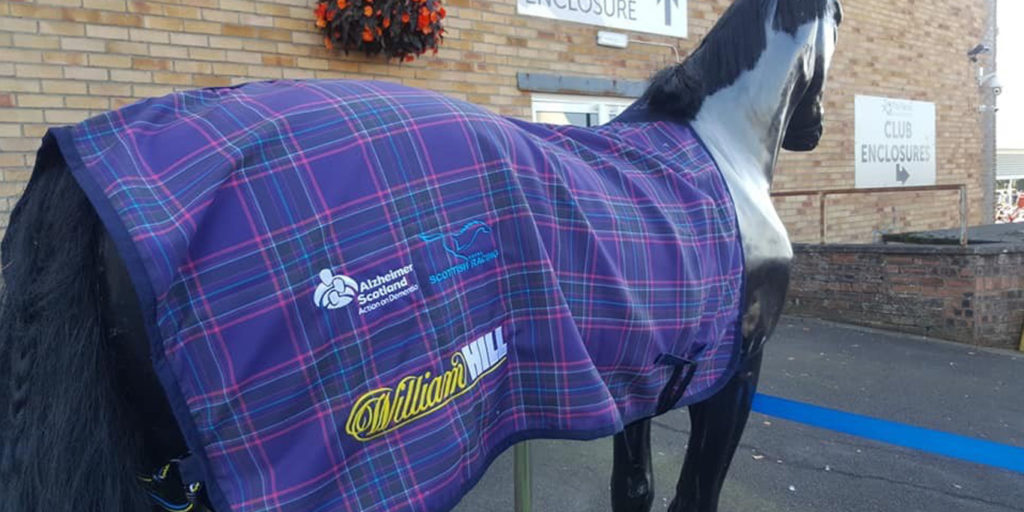
Workforce & Careers
Country: United States
Horses need people for care – and sometimes people need horses for life skills and creating a future. At Blackburn Correctional Complex in Lexington, Kentucky, retired racehorses help prepare men for future career opportunities through the Workforce Readiness and Reentry Program.
Blackburn Correctional Complex is home to around 600 men serving a range of sentences for past transgressions. It is an educational institution that prepares occupants with vocational skills for their return to the workforce.
The Thoroughbred Retirement Foundation (TRF) is the oldest thoroughbred aftercare organization in the United States, providing safe places for former racehorses to live out their remaining years. The Second Chances Program began in 1983, when TRF collaborated with correctional facilities across the United States and brought inmates together with retired racehorses. Blackburn became the first TRF Second Chances Program in Kentucky in 1999 and is now the largest in the US, with nearly 50 horses living out their retirement years at the state’s largest minimum security prison.
The final piece of the equation was the Equine Workforce Initiative, which engaged with progressive employers in the equine industry, partnered them with the TRF Second Chances Program and created a link to the industry through the existing Blackburn scheme.
The Workforce Readiness and Reentry Program began at Blackburn in November 2019. It assists men from the beginning of their participation in the TRF Second Chances Program through to their release, employment, and in many cases beyond.
The program has two components, starting with an employability course at Blackburn, where participants undergo a resume and cover letter building curriculum, engage in proper interview skills and learn how and where to find employment.
The second phase is an employer engagement segment, where the men have access to mock interview sessions with employers and equine industry professionals.
When they graduate from the Second Chances Program and are nearing release, the team of TRF, Blackburn and the Equine Workforce Initiative helps to facilitate employer connections and job opportunities. This offers support during the hiring process and facilitates a job placement before release. Program graduates are also supported by the team after their release with resources ranging from transportation and housing, to clothing and financial education.




Robert Grabow and Everett Tucker are graduates of the Workforce Readiness and Reentry Program at Blackburn. They both now work at Spy Coast Farm, a sporthorse breeding and training facility in Lexington, and have shared their transformational experiences.
[While at Blackburn] I was changing my life around. I wanted to do something different with myself, and I was just learning as much as I could and doing as much as I could. So I looked around and TRF was always open and so I just decided to go down there. And when I went down there, I just fell in love with horses.
Blackburn has given me confidence around horses, has helped me know how to stay safe around horses. It has helped me understand when a horse is colicky or in pain. Or when it’s lame, or when a horse is biting me I know it’s just grooming me, I don’t get mad, I’m patient with them. That’s what Blackburn has really helped me do – build my confidence to be able to work with horses.
[At Spy Coast] it’s been a humbling experience to be a part of a team. I remember David [O’Brien, head trainer and supervisor] saying he couldn’t have done it without us [at a show] and that made me feel really good, that I was part of the team, part of the family. And when our horse came in second, I could see that our work had paid off, and that I am part of something. It’s not just a job to me, I’m a team member, like playing for the San Francisco 49ers. We are the team of Spy Coast.
Robert (Bob) Grabow
It was definitely a blessing for me to land in the program at Blackburn. Everything that got me ready for this job, I learned there. It was great.
Everett Tucker
By identifying people who might not have known they have a place with us, the thoroughbred industry is finding, engaging and attracting people to fill immediate gaps in our workforce.
Visit the United States page on TfRI for more information about the country’s educational, community engagement and career initiatives.
